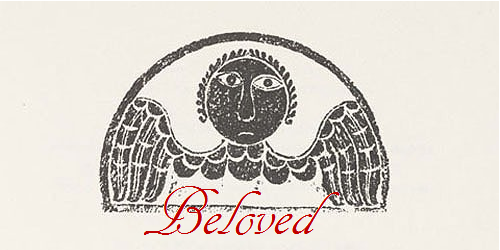Adaptation of the Novel
Clip from the Film
Historic Background & Setting
1870s (with flashbacks to the early 1850s)
Sweet Home Plantation - Flashbacks
124 Bluestone Road in Cincinnati, Ohio
Civil War/Slave Era
Fluctuates in tense between immediate and distant past
Historical Relevance
Toni Morrison used the story of Margaret Garner as inspiration for Beloved. The story contributes to the overall meaning of the work and explains to the reader what slaves were willing to do to keep their family from suffering in slavery.
Important Quotations
•"124 was spiteful. Full of a baby's venom." (3)•"124 was loud." (199)•"124 was quiet." (281)•"You your best thing, Sethe. You are." (322)•"Everybody knew what she was called, but nobody anywhere knew her name. Disremembered and unaccounted for, she cannot be lost because no one is looking for her, and even if they were, how can they call her if they don't know her name? Although she has claim, she is not claimed." (323)•"You got two feet, Sethe, not four."•"She is the one. She is the one I need. You can go but she is the one I have to have."•"Love is or it ain't. Thin love ain't love at all."
Useful Criticisms
Coonradt, Nicole M. "To be loved: Amy Denver and human need--bridges to understanding in Toni Morrison's Beloved." College Literature 32.4 (2005): 168+. Literature Resource Center. Web. 15 Apr. 2010.Durkin, Anita. "Object written, written object: slavery, scarring, and complications of authorship in Beloved." African American Review 41.3 (2007): 541+. Literature Resource Center. Web. 15 Apr. 2010.Fuston-White, Jeanna. "'From the Seen to the Told': the construction of subjectivity in Toni Morrison's Beloved." African American Review 36.3 (2002): 461+. Literature Resource Center. Web. 15 Apr. 2010.Ochoa, Peggy. "Morrison's Beloved: Allegorically Othering 'White' Christianity." MELUS 24.2 (1999): 107. Literature Resource Center. Web. 15 Apr. 2010.Wardi, Anissa Janine. "A laying on of hands: Toni Morrison and the materiality of Love." MELUS 30.3 (2005): 201+. Literature Resource Center. Web. 15 Apr. 2010.(Sorry it's not in the correct format...it will not let me tab over)
Possible Discussion Questions
1. What judgments does Toni Morrison make on Sethe's killing of her daughter? How does Sethe's community judge her? How does Paul D. judge her? How does she judge herself? How do you judge her?2.Why does the author make the choices she does in her presentations of whites?3.Why do you think the book is titled "Beloved" rather than "Sethe" or "The Ghost" or some such? What features of the book does the title emphasize?4.What role does the schoolteacher play in her story?5.Why is the novel told through a series of flashbacks? Is the chronological sequence always clear?
Toni Morrison
Toni Morrison was born February 18, 1931 in Lorain, Ohio and is currently 81 years old. She was originally known as Chloe Anthony Wofford but changed her name to “Toni” because she found that most people found “Chloe” difficult to pronounce. She grew up in the black community of Lorain because her family was trying to escape the racism problems in the southern states. Her family had a rich African- American heritage and expressed it though songs and folktales. She was the second child of four children born to George Wofford and Ramah Willis Wofford. Through elementary school and high school, Toni did not experience discrimination until she began dating. While in first grade, she was the only African-American student and the only student who was able to read. She was very successful through school and graduated Lorain High School with honors. After high school, Toni attended the Howard University in Washington D.C. beginning in 1949 and graduated in 1953 with a B.A. in English. The University was the most distinguished African-American college in America. In Ithaca, New York, she continued her studies at the Cornell University where she received a master’s degree in 1955. Throughout her career, she was an instructor at the Texas Southern University, in English and was also an English professor in the English department at Howard University. While being a textbook editor in Syracuse, New York, she also taught at the State University of New York. She married Harold Morrison while working at Howard University but had an unhappy marriage so she divorced him while she was pregnant with her second son. Exploring the experiences and roles of African-American women in a racist and male dominated society is common in Morrison’s works. She has been a member of the National Council on the Arts as well as the American Academy and Institute of Arts and Letters. Toni Morrison wrote her first novel, The Bluest Eye, while teaching at Howard University in 1970. In 1992, after publishing her first novel, she admits that she regrets changing her name to Toni because it made her feel as if she had been writing under another person’s name and not her own. The novel is based off of Morrison’s own story written in 1966 for a writers’ group. Toni Morrison has a true passion for writing because she finds it to be exciting as well as challenging. To her, everything else, except parenting, is too boring. Toni Morrison is a very successful African-American woman. In the Council of Humanities at Princeton University, Toni was named the Robert F. Goheen in 1987. She became the first African-American female writer to hold a named chair at an Ivy League University. In 1993, Morrison was the eighth woman and the first African-American woman to receive the Nobel Prize in Literature.
Other Works
The BLuest Eye
Sula
Song of Solomon
Paradise
Love
The Dancing MInd
Jazz
Tar Baby
Major Characters
Sethe
Sethe is a very interesting/tragic character. Her memories of killing Beloved have been locked away until she comes back to haunt her. Sethe must give in to Beloved in order to restore their relationship--even though she is being suffocated/starved because of this. Sethe almost dies until the neighborhood excises Beloved and is then restored back to health with the help of Denver, her daughter, and Paul D, her lover.
Denver
Beloved
Beloved is Sethe's deceased child that has "come back." She is essentially evil. She controls Sethe's relationships with Paul D and Denver and only wants Sethe in her life. She suffocates Sethe and almost kills her due to starvation. Sethe's guilt for slaying her child has caught up with her and the only way to regain some love from this child/ghost/Beloved character is to give in to her. Again, this essentially kills her until Ella rounds up the neighborhood (which the neighborhood should have done when the four horsemen came for Sethe during the act of killing her children) and relieves the ghost from the presence of Sethe, Denver and Paul D.
Paul D
Stamp Paid
Halle
Baby Suggs
Minor Characters
Sixo & Thrity-Mile Woman
Paul A & Paul F
The other two Paul's from Sweet Home. The lack of last names means that they do not have any history.
The Bodwins
The Garners
The Sweet Home and slave owners during the time when Halle, Sethe, Baby Suggs, Sixo, Paul A/D/F and others. Mr. Garner died and Mrs. Garner hired Schoolteacher to help oversee the plantation.
Ella
The woman with a troubled/similar-to-Sethe's past. She is the one who arranges the neighborhood to go and evict Beloved from 124.
Lady Jones
An educated black woman who was the teacher to those who could not become educated during that time. She was Denver's school teacher when she was younger and helped arrange food packages for Denver when Sethe took ill.
Amy Denver
The white woman who had discovered the pregnant Sethe and who helped her birth Denver. She is the one in which Denver is named after. She rubbed Sethe's feet (quite uncommon during that period of time) and was the one who commented that her scars on her back looked like a chokecherry tree.
Howard & Buglar
The two oldest children of Sethe. Not much is known about them except for the fact that they ran away from 124.
Schoolteacher & Nephews
Schoolteacher is the man who takes over Sweet Home after Mr. Garner dies. He is not a necessarily nice person and neither are his nephews, who mess around with Sethe (which is highly inappropriate).
Themes
Guilt
Freedom
Protection
Forgiveness
Motherhood
(Re)Memories
Loss of Identity
Symbols & Motifs
Trees
Denver's Emerald Closet of boxwood bushes
Water/Rebirth
Tin Tobacco Box
Paul D's Heart
The Supernatural
References to Christianity
The Color Red
Denver's Red Velvet


